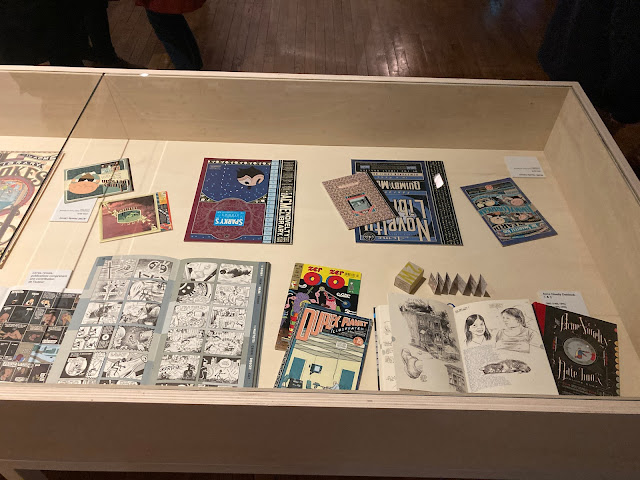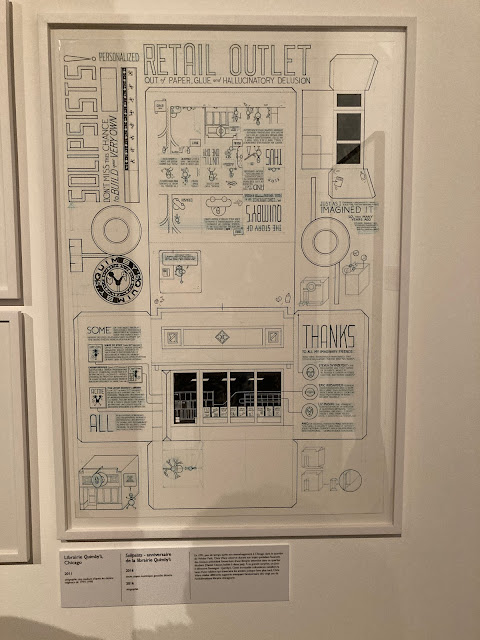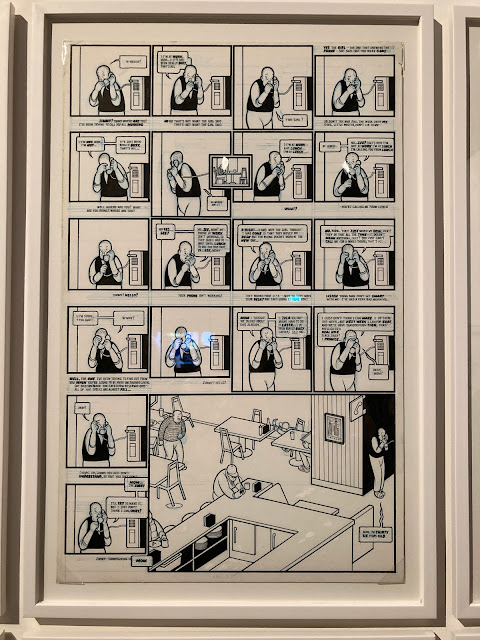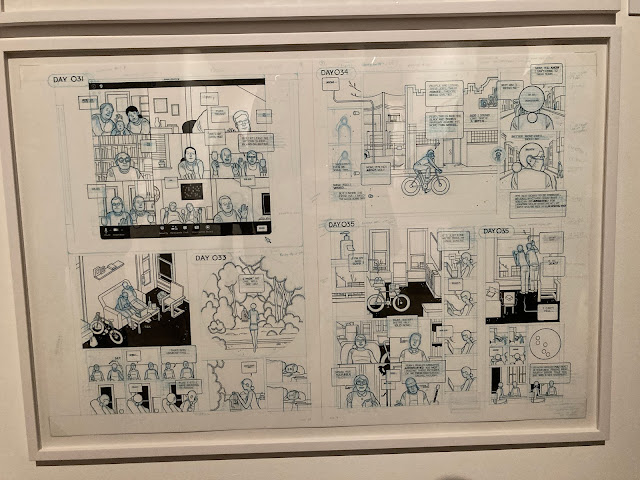Building Chris Ware. Sonia Déchamps, Benoit Peeters and June Misserey. Angoulème. Salle Iribe - Espace Franquin. 17-20 March 2022.
Chris Ware's Grand Prix exhibition at the 2022 Angoulême International Comics Festival was greatly anticipated by festival goers curious to see if there was more to this American auteur than meets the page and it certainly did not disappoint in delivering a visual smorgasbord to contemplate. With over 120 original pages on display alongside an impressive collection of publications (his own and those which he had a handle in designing), this exhibition was a revelation especially for audiences who may have only encountered Ware through the collected (and translated) 'graphic novel' versions of his work and were thus unfamiliar with the range of different sizes, shapes and formats of his comics that culminated in BUILDING STORIES (2012). If the collected versions of JIMMY CORRIGAN (2000) and RUSTY BROWN (2020) suggested a standardized book format, this exhibition set out to confound that notion and offer visitors the experience of confronting Ware's formal inventiveness and experimentation in their original and published dimensions.
Curated by Benoit Peeters and June Misserey in generous collaboration with Ware himself, the exhibition was spatially organized into five sections ordered along a chronological path that took visitors on a journey through his published work. The first four sections showcased his four major comics (the ACME Novelty Library; Jimmy Corrigan; Building Stories; and Rusty Brown) and a fifth section, entitled "Comics & Co", highlighted many of Ware's para-comics projects that have resulted in posters, book and magazine covers, comic strip collections, self-published magazines, animated shorts, toys and novelty artifacts.
The exhibition was deliberately designed for visitors to experience Ware's work and its formal and artistic evolution through the chronology of his work. The amazement at the sheer breadth of Ware's published output was matched by disbelief and admiration for the discipline and labor that comes with very close examination of his original pages. A greater appreciation of Ware's page and panel layout shone through in their original pages, and the meticulous details in the drawings (and under-drawing) were so precise that it immediately evoked comparisons with engineering drawings and architectural blueprints.
One question that was clearly on people's mind through the exhibition was just how much time in the day does Ware give to work on his pages, as the sheer labor involved in the creation and planning of each of these pages seems incredibly intense. By the end of the exhibition journey, one could be forgiven for feeling fatigue as the sensory overload of deciphering loads of Chris Ware original pages in large format has an exhaustive effect. That said, there was no denying that the organization of the exhibition, from its display installation to its blend of critical and biographical captions to illuminate select pieces, succeeded in showcasing a unique comics artist with total control over his work from page to bookshelf and beyond.
The photos below offer as much of a complete record of the components that made up BUILDING CHRIS WARE in the order of the exhibition's narrative path. A video walkthrough of this exhibition is also presented on this blog.
-Nick Nguyen
All photos taken by Nick Nguyen
Photos are organized in an attempt to present a
visual chronology of the exhibition installation as experienced in a
sequential walkthrough.
 | |||||































































































































